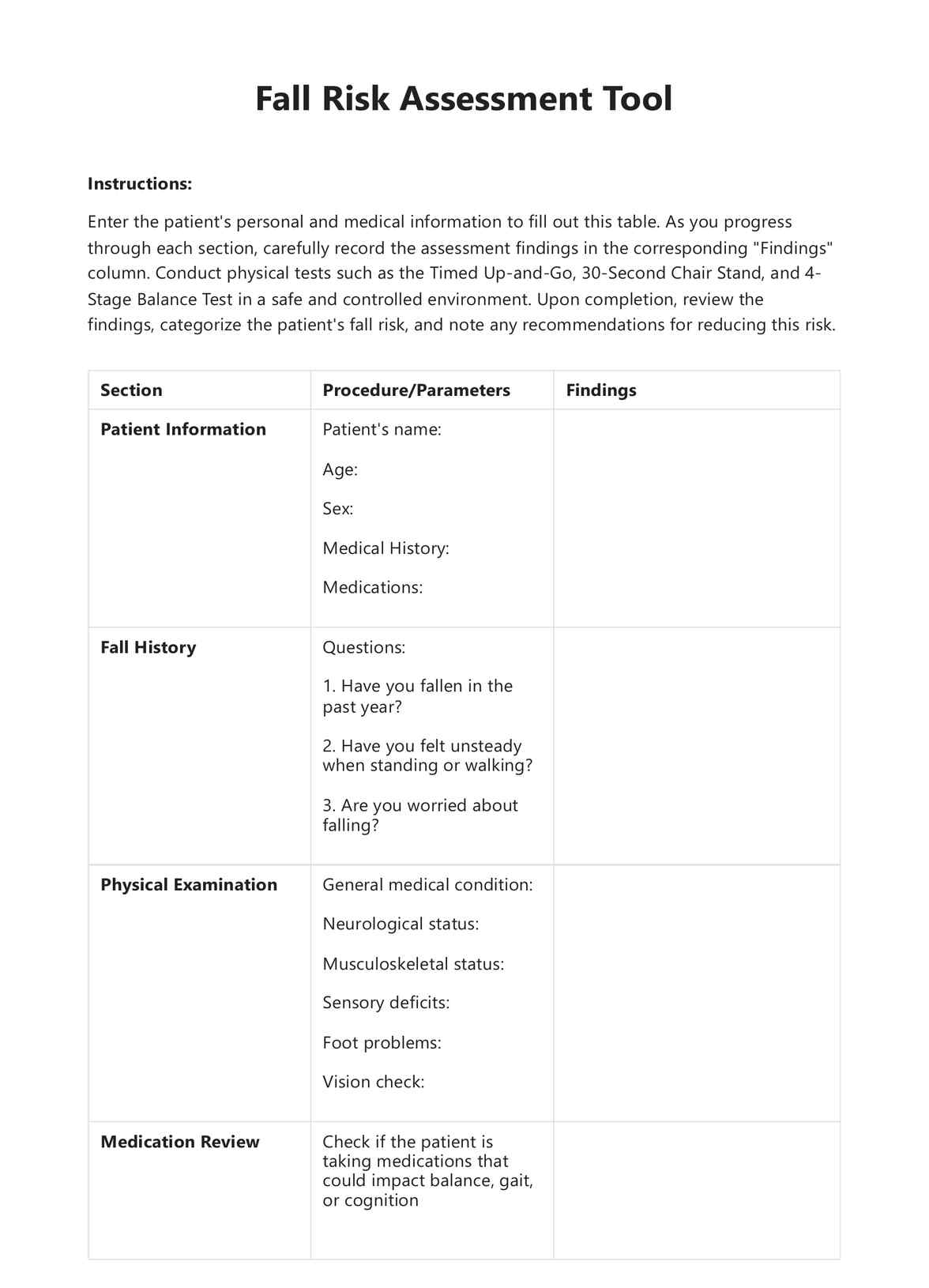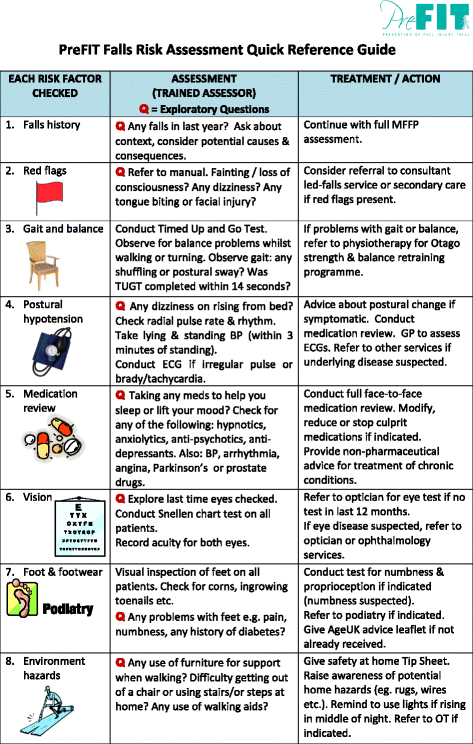Some Known Facts About Dementia Fall Risk.
Table of Contents7 Easy Facts About Dementia Fall Risk ExplainedThe Of Dementia Fall RiskMore About Dementia Fall RiskThe 8-Second Trick For Dementia Fall Risk
An autumn risk assessment checks to see just how most likely it is that you will fall. It is primarily provided for older adults. The assessment usually includes: This consists of a collection of inquiries concerning your total wellness and if you have actually had previous falls or troubles with equilibrium, standing, and/or strolling. These devices examine your stamina, balance, and gait (the method you walk).Interventions are recommendations that may lower your risk of dropping. STEADI consists of three actions: you for your threat of falling for your risk elements that can be improved to attempt to stop drops (for instance, balance issues, impaired vision) to lower your risk of dropping by utilizing efficient techniques (for instance, providing education and resources), you may be asked numerous questions consisting of: Have you dropped in the past year? Are you stressed regarding dropping?
If it takes you 12 seconds or more, it may mean you are at higher risk for an autumn. This examination checks strength and balance.
Relocate one foot halfway ahead, so the instep is touching the big toe of your other foot. Move one foot completely in front of the other, so the toes are touching the heel of your other foot.
Dementia Fall Risk Things To Know Before You Get This
Most drops take place as a result of multiple contributing elements; for that reason, managing the threat of falling begins with determining the factors that add to fall risk - Dementia Fall Risk. Several of one of the most appropriate danger variables include: Background of previous fallsChronic clinical conditionsAcute illnessImpaired stride and balance, lower extremity weaknessCognitive impairmentChanges in visionCertain risky drugs and polypharmacyEnvironmental aspects can likewise boost the risk for falls, including: Insufficient lightingUneven or harmed flooringWet or unsafe floorsMissing or harmed hand rails and grab barsDamaged or improperly fitted equipment, such as beds, wheelchairs, or walkersImproper usage of assistive devicesInadequate supervision of the individuals residing in the NF, including those that display hostile behaviorsA effective loss threat management program calls for an extensive medical evaluation, with input from all participants of the interdisciplinary team

The care plan should additionally include interventions that are system-based, such as those that promote a secure environment (ideal lighting, hand rails, get hold of bars, etc). The efficiency of the interventions need to be evaluated periodically, and the care plan changed as needed to show modifications in the loss risk analysis. Executing a loss threat administration system making use of evidence-based best method can reduce the frequency of drops in the NF, while limiting the capacity for fall-related injuries.
The smart Trick of Dementia Fall Risk That Nobody is Talking About
The AGS/BGS standard recommends screening all grownups matured 65 years and older for fall risk every year. This screening contains asking patients whether they have fallen 2 or even more times in the previous year or sought medical attention for a loss, or, if they have actually not dropped, whether they really feel unstable when walking.
Individuals that have dropped as soon as without injury ought to have their equilibrium and stride evaluated; those with gait or balance irregularities must obtain additional assessment. A background of 1 fall without injury and without stride or equilibrium problems does not warrant more assessment past continued yearly autumn danger testing. Dementia Fall Risk. A fall threat evaluation is called for as part of the Welcome to Medicare exam

The smart Trick of Dementia Fall Risk That Nobody is Discussing
Documenting a falls history is one of the quality indicators for loss avoidance and monitoring. copyright medications in certain are independent forecasters of falls.
Postural hypotension can frequently be alleviated by reducing the dosage of blood pressurelowering medications and/or quiting medicines that have orthostatic hypotension as a negative effects. Use of above-the-knee assistance tube and resting with the head of the bed boosted might also decrease postural decreases in blood stress. The recommended elements of a fall-focused checkup are revealed in Box 1.

A yank time higher than or equivalent to 12 seconds suggests high loss danger. The 30-Second Chair Stand test examines lower extremity toughness and balance. my response Being unable to stand from a chair of knee elevation without using one's arms suggests boosted autumn threat. The 4-Stage Equilibrium examination evaluates fixed balance by having the client stand in 4 positions, each gradually a lot more tough.